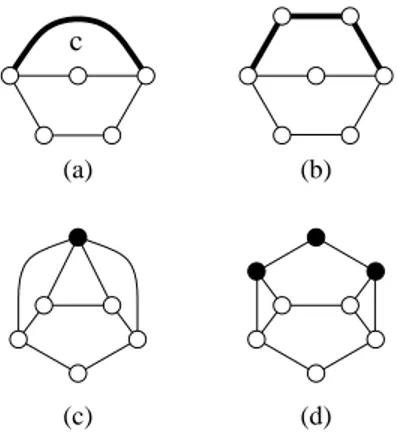Characterizing N+-perfect line graphs
Texte intégral
Figure


Documents relatifs
Defining suitable induced set-labels for the signed graphs obtained by finite number of edge contractions and verifying the balance and clusterability of these reduced signed
The circular chromatic number of a graph is a well-studied refinement of the chromatic number. Circular-perfect graphs is a superclass of perfect graphs defined by means of this
Since every edge of a bridgeless cubic graph is contained in a perfect matching (see [10]) the minimum number τ(G) of perfect matchings covering its edge set is well
Moreover we prove that the existence and construction problems for perfect matchings in bipartite graphs are as difficult as the existence and construction problems for a
On the other hand, it is shown in [20] that the restricted perfect matching problem is polynomial when G is a complete bipartite graph and k = 2.. Thus, we deduce that the L
We perform a thorough computational complexity study of the problem on subclasses of perfect graphs and identify several polynomial-time solvable cases, for example, on interval
It is also easy to see that if the potential is not symmetric (in this case, meaning the values on the two vertices are distinct), then the eigenvectors will not have the form
ÆtnaNova’s users organize definitions, theorem statements, and proof specifica- tions, in files named scenarios 2 , which ÆtnaNova processes in order to establish whether or not